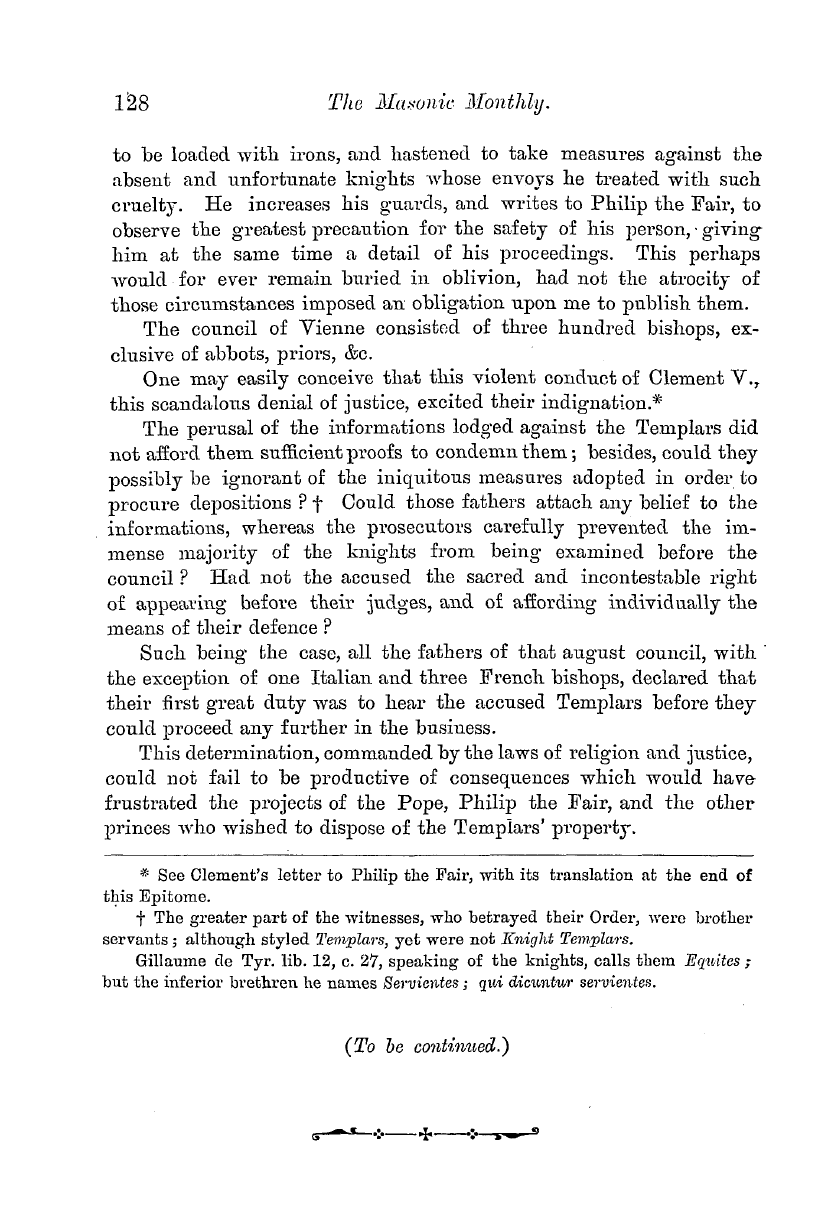Note: This text has been automatically extracted via Optical Character Recognition (OCR) software.
The Legend Of The Introduction Of Masons Into England.
In describing the general destruction of the towns , & c . by the Saxons , Gildas Avrites : * " Lamentable to behold , in the midst of the streets lay the tops of lofty towersf tumbled to the ground , stones of high walls , holy altars , & c . & c . " Nennius , who flourished about 620 , in describing BritainJ states :
" It has also a vast many promontories , and castles innumerable , built of brick and stone . " Here the words brick and stone are added to the account given by Gildas . In another place § the wall described above is mentioned , and Dr .
Giles 11 informs us that in one of the MS . of this history it is stated : " The above Emperor , Severus , constructed it of rude workmanship , in length 132 miles The Emperor Carausius afterwards rebuilt it , and fortified it with seven castles between the tAvo mouths : he built also a round house of polished stones on the
banks of the river Carun [ Carron ] Tf : he likewise erected a triumphal arch , on which he inscribed his own name in memory of his victory . " The Emperor Carausius died , about A . D . 293 . Nennius records : Monasteries having been erected , one is called a large one ** but no mention is made of the manner in which they were
built , except Avhereff in telling of the search made b y Vortio-ern for a fitting site upon Avhich " to build and fortify a cit y . " Nennius writes , that when a fitting site had been found "Then the King sent for artificers , carpenters , stone-masons , and collected all the materials requisite for building J J . " It is with regard to the story
of the whole of these materials having been swallowed up into the earth in one night that we are introduced to the Enchanter Merlin , who triumphs over the King ' s magicians , and explains the cause of the disaster . This fable was repeated without mention of stonemasons , & c , and with some alteration by other chroniclers . Geoffrey of Monmouth ( Bishop of St . Asaph about the year 1152 ) in his " Historia Britonum " in spite of the romance in which he so often
Note: This text has been automatically extracted via Optical Character Recognition (OCR) software.
The Legend Of The Introduction Of Masons Into England.
In describing the general destruction of the towns , & c . by the Saxons , Gildas Avrites : * " Lamentable to behold , in the midst of the streets lay the tops of lofty towersf tumbled to the ground , stones of high walls , holy altars , & c . & c . " Nennius , who flourished about 620 , in describing BritainJ states :
" It has also a vast many promontories , and castles innumerable , built of brick and stone . " Here the words brick and stone are added to the account given by Gildas . In another place § the wall described above is mentioned , and Dr .
Giles 11 informs us that in one of the MS . of this history it is stated : " The above Emperor , Severus , constructed it of rude workmanship , in length 132 miles The Emperor Carausius afterwards rebuilt it , and fortified it with seven castles between the tAvo mouths : he built also a round house of polished stones on the
banks of the river Carun [ Carron ] Tf : he likewise erected a triumphal arch , on which he inscribed his own name in memory of his victory . " The Emperor Carausius died , about A . D . 293 . Nennius records : Monasteries having been erected , one is called a large one ** but no mention is made of the manner in which they were
built , except Avhereff in telling of the search made b y Vortio-ern for a fitting site upon Avhich " to build and fortify a cit y . " Nennius writes , that when a fitting site had been found "Then the King sent for artificers , carpenters , stone-masons , and collected all the materials requisite for building J J . " It is with regard to the story
of the whole of these materials having been swallowed up into the earth in one night that we are introduced to the Enchanter Merlin , who triumphs over the King ' s magicians , and explains the cause of the disaster . This fable was repeated without mention of stonemasons , & c , and with some alteration by other chroniclers . Geoffrey of Monmouth ( Bishop of St . Asaph about the year 1152 ) in his " Historia Britonum " in spite of the romance in which he so often































































